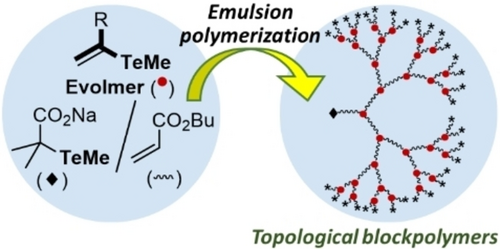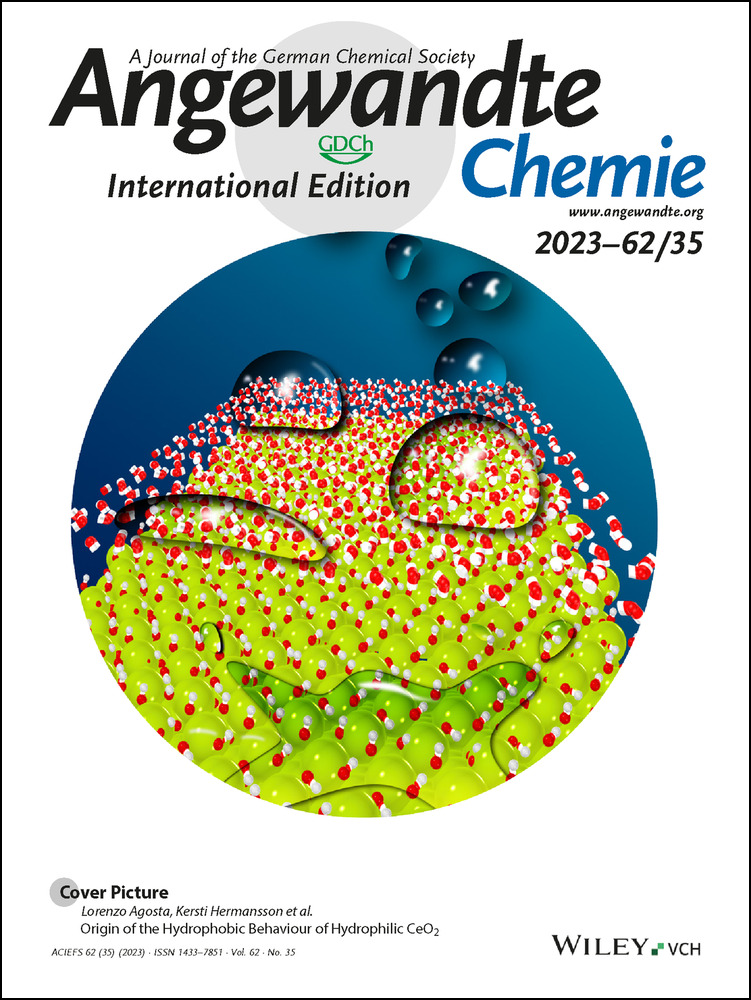Practical Synthesis of Dendritic Hyperbranched Polyacrylates and Their Topological Block Polymers by Organotellurium-Mediated Emulsion Polymerization in Water**
A previous version of this manuscript has been deposited on a preprint server (https://doi.org/10.26434/chemrxiv-2023-63gsc).
Graphical Abstract
Copolymerization of a vinyl telluride and butyl acrylate (BA) using organotellurium-mediated radical polymerization (TERP) under emulsion conditions afforded structurally controlled hyperbranched poly(butyl acrylate)s (HBPBAs) as polymer particles dispersed in water. Various block copolymers consisting of different topologies were successfully synthesized using macro-TERP CTA with linear and HB structures.
Abstract
The practical synthesis of structurally controlled hyperbranched polymers (HBPs) by organotellurium-mediated radical polymerization (TERP) in water under emulsion conditions is reported. Copolymerization of vinyltelluride named evolmer, which induces controlled branch structure, and acrylates with TERP chain transfer agent (CTA) in water afforded HBPs having dendron structure. The molecular weight, dispersity, branch number, and branch length of the HBPs were controlled by changing the amount of CTA, evolmer, and acrylate monomers. HB-poly(butyl acrylate)s (HBPBAs) with up to the 8th generation having an average of 255 branches were successfully synthesized. As the monomer conversion reached nearly quantitative and the obtained polymer particles were well dispersed in water, the method is highly suitable for synthesizing topological block polymers, block polymers consisting of different topologies. Thus, linear-block-HB, HB-block-linear, and HB-block-HB-PBAs with the controlled structure were successfully synthesized by adding the second monomer(s) to the macro-CTA. The intrinsic viscosity of the resulting homo- and topological block PBAs was systematically controlled by the degree of the branch, the branch length, and the topology. Therefore, the method opens the possibility of obtaining various HBPs with diverse branch structures and tuning the polymer properties by the polymer topology.
Conflict of interest
The authors declare no conflict of interest.
Open Research
Data Availability Statement
The data that support the findings of this study are available in the supplementary material of this article.





